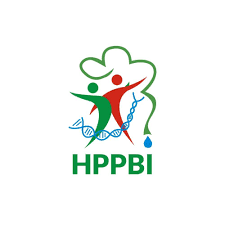ANALISIS DAN REKONSTRUKSI DESAIN KEGIATAN LABORATORIUM PADA MATERI PENCEMARAN LINGKUNGAN TINGKAT SMA
DOI:
https://doi.org/10.15575/bioeduin.v12i1.17260Keywords:
LKS, Praktikum, Pencemaran lingkungan, KurikulumAbstract
The design of laboratory activities is used in practicum activities in schools to develop scientific process skills. This study provides an overview of the design of laboratory activities used in schools. The research method used is descriptive qualitative with a research sample of six practical worksheets selected by purposive sampling technique. The research instruments used in the study were conceptual analysis, competency analysis, practical analysis and knowledge construction analysis based on the Vee Diagram scoring table adapted from Novak & Gowin (1984). The results showed that all DKL met the minimum standards of curriculum competency standards in force. Whereas for competency analysis, most of the laboratory activity designs used have not developed a high level cognitive level and have not trained the scientific method skills needed by students, in the practical aspects of tools and materials can be easily obtained, but for the structure of the work steps there are unstructured ones. The results of the analysis of knowledge construction using instruments from Novak & Gowin (1984) show that most procedural steps can be done but are less relevant to the knowledge reconstruction process or do not lead to the formation of knowledge claims in linking object events (observed facts) with the knowledge they already have. .Reconstruction made base the results of analysis DKL.
Desain kegiatan laboratorium digunakan dalam kegiatan praktikum di Sekolah untuk mengembangkan keterampilan proses ilmiah. Penelitian ini memberikan gambaran desain kegiatan laboratorium yang digunakan di Sekolah. Metode penelitian yang digunakan adalah deskriptif kualitatif dengan sampel penelitian berjumlah enam lembar kerja praktikum yang dipilih dengan Teknik purposive sampling. Instrumen penelitian yang digunakan dalam penelitian yaitu analisis konseptual, analisis kompetensi, analisis praktikual dan analisis konstruksi pengetahuan berdasarkan tabel penskoran Diagram Vee yang diadaptasi dari Novak & Gowin (1984). Hasil penelitian menunjukkan bahwa seluruh Desain Kegiatan Laboratorium (DKL) memenuhi standar minimum standar kompetensi kurikulum yang berlaku. Sedangkan untuk analisis kompetensi sebagian besar desain kegiatan laboratorium yang digunakan belum mengembangkan level kognitif tingkat tinggi dan belum melatihkan kemampuan metode ilmiah yang dibutuhkan oleh siswa, pada aspek praktikal alat dan bahan dapat dengan mudah diperoleh namun untuk struktur langkah kerja terdapat yang tidak terstruktur. Pada hasil analisis konstruksi pengetahuan menunjukkan sebagian besar procedural dapat dikerjakan namun kurang relevan dengan proses rekonstruksi pengetahuan. Rekonstruksi DKL dibuat berdasarkan hasil analisis DKL.Â
Â
References
Clavert, M. (2019). Universities of The Future Collaborative Digital Shift Towards A New Framework Fr Industry and Education. Co-Funded by Erasmus+ Programme of The Europan Union. Dapat di akses di https://universitiesofthefuture.eu/wp-content/uploads/2019/02/State-of-Maturity_Report.pdf
Emda, A. (2014). Laboratorium sebagai Sarana Kimia dalam Meningkatkan Pengetahuan dan Keterampilan Kerja Ilmiah. Latanida Journal. 2(2)
Japan International Cooperation Agency (JICA) (2016). Masyarakat dan Pendidikan di Abad ke-21. Tersedia online di https://www.jica.go.jp/project/indonesian/indonesia/0800042/materials/materials_01.html
Marta, H., Catria, M., Ondi., & Rahma. (2018). Upaya Meningkatkan Keterampilan Proses Sains Melalui Metode Praktikum Berbasis Modigied Free Inquiry (MFI) pada Konsep Animalia di Kelas X MIPA. Quangga. 10(1) Hal 1-9 dapat diperoleh online di file:///C:/Users/Nuraida/Downloads/UPAYA_MENINGKATKAN_KETERAMPILAN_PROSES_SAINS_MELAL.pdf
Millar, R. (2004). The Role of Practical Work in the teavhing and learning science. Paper prepared for meeting: Hight school sciencelaboratories: role and vision department of education studies university of York
Novak, J.D., & Gowin, D.B. (1984) Learning How To Learn. New York: Cambridge University Press
Rusmiyati, A., & Yulianto, A. (2009). Peningkatan Keterampilan Proses Sains dengan Menerapkan Model Problem Based Instruction. Jurnal Pendidikan Fisika. 5(2009) Hal 75-78
Rustaman,N., & Rustaman.,A. (2010). Kemampuan Kerja Ilmiah dalam Sains. Karakteristik Kurikulum Berbasis Kompetensi Mata Pelajaran Biologi. Bandung: UPI dapat diakses online dihttp://file.upi.edu/Direktori/FPMIPA/JUR._PEND._BIOLOGI/131353755-ANDRIAN_RUSTAMAN/KERJA_ILMIAH-UNPAS2003.pdf
Sulisworo, D. & Suranto. (2019). Konsep Pengembangan Kurikulum Membangun Sekolah Global. Semarang: ALPRIN
Supriatno, B. (2009) Uji Langkah Kerja Laboratorium Biologi Sekolah. Prosiding Seminar Nasional Jurusan Pendidikan Biologi. Bandung: Universitas Pendidikan Indonesia
Supriatno, B. (2018). Praktikum untuk Membangun Kompetensi. Proceding Biology Education Conference. 15(1) Hal 1-18
Suyasa, W.B. (2015). Pencemaran Air dan Pengelolahan Air Limbah. Bali: UDAYANA University Press
Trilling, & Fadel, C. (2009). 21st Century Skills: Learning For Life In Our Times. San Francisco: John Wiley and Sons tersedia online di http://gen.lib.ec/book/index.php?md5=7D2B90D1
Wilcox, B. R., & Lewandowski, H.J. (2016). Open-Ended versus Guided Laboratory Activities: Impact on Student’ Beliefs About Experimental Physics. Physical Review Physics Education Research. 12(2)
Downloads
Published
How to Cite
Issue
Section
Citation Check
License
Authors who publish in Jurnal BIOEDUIN agree to the following terms:
- Authors retain copyright and grant the journal right of first publication with the work simultaneously licensed under a Attribution-ShareAlike 4.0 International (CC BY-SA 4.0) License that allows others to share the work with an acknowledgment of the work's authorship and initial publication in this journal.
- Authors are able to enter into separate, additional contractual arrangements for the non-exclusive distribution of the journal's published version of the work (e.g., post it to an institutional repository or publish it in a book), with an acknowledgment of its initial publication in this journal.
- Authors are permitted and encouraged to post their work online (e.g., in institutional repositories or on their website) prior to and during the submission process, as it can lead to productive exchanges, as well as earlier and greater citation of published work (See The Effect of Open Access).








